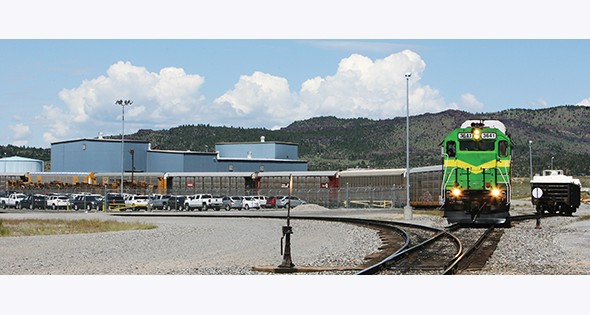
Getting It There is Getting Better
07 Mar, 2017
Increased demand for faster, cheaper delivery drives logistics strategy
Logistics is simply the coordination of the movement of freight over land, sea and sky.
But there are so many moving parts in the overall logistics picture, from so many different parts of the world, that there is no simple way to describe the real dynamics of the logistics industry.
In the U.S., statistics help tell the story.
According to the U.S. Department of Transportation (U.S.DOT) figures, nominal freight revenue per ton-mile increased for all freight modes from 2009 to 2012. But revenue increases exceeded producer price increases only for domestic air.
Domestic air carriers experienced the largest increase in revenue per ton-mile, increasing 143 percent from 1990 to 2012. Class I railroads, defined as line-haul freight railroads with annual operating revenues of $475.75 million or more as of 2014, experienced a smaller increase in revenue per ton-mile of 48 percent in the same period.
The value per ton of freight shipments increased by 17.5 percent between 1997 and 2013, from $763 to $896 per ton in 2007 dollars.
There were nearly 214,000 transportation and warehousing establishments (excluding rail) in 2012, with more than one-half of those primarily engaged in trucking. Revenue generated by trucking accounted for 32.7 percent of transportation and warehousing sector revenue, while warehousing accounted for a small percentage of the total.
The Federal Highway Administration found that patterns of production and consumption in an economy are the primary drivers of freight mode share. Pipelines are the primary shipping medium for natural gas, gasoline, fuel oils and crude petroleum. Rail is used primarily for coal, cereal grains, basic chemicals and other bulk products. Trucks are involved in the supply chains of almost all commodities, particularly for consumer goods that need to be delivered to retail locations.
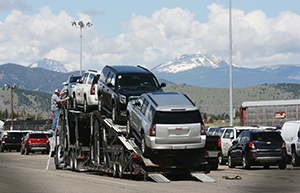
Vehicles being moved at the Port of Montana in the Montana Connections Industrial Park. Courtesy of Derek Pruitt.
Port Pushing Development
The American Association of Port Authorities reports that between 2000 and 2013, the volume of containers shipped through U.S. ports grew by approximately 50 percent, from 30.4 million to 44.6 million TEUs (TEU is the unit capacity of a 20-foot vessel).
One port witnessing this sort of growth is the Port of Baltimore, which in 2011, handled $51 billion of cargo, and in 2014, generated $2.2 billion in business revenues.
The port operation is built on efficiency and speed – cranes productivity is at 38 to 40 moves per hour per crane, and trucks can go in and out in 30 minutes. “We are positioning ourselves to keep those type of industry-leading metrics in place for our beneficial cargo owners,” Donavan Murray, general manager of intermodal and trade development for the Port of Baltimore, says. “A retailer is no good if the Valentine’s Day merchandise shows up at Easter.”
The port also conducts customs and exams in a new tailgate area to expedite the movement of freight from the docks to the interstates.
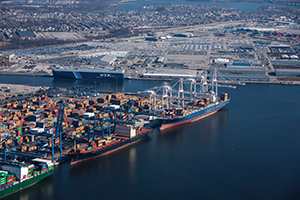
The Seagirt Marine Terminal with the Port of Baltimore’s four Neo-Panamax Cranes and a 50 foot deep channel handle the world’s largest ships with ease. Courtesy of Bill McAllen.
Port administrators are working on specific funding – $155 million through the federal Fast Lane program – for the expansion of the Howard Street tunnel near the port to allow double stack access cargo to pass through it. If the tunnel were expanded, 178,000 containers that now leave the port on tractor-trailers each year could be moved by rail.
“When we get that access, that will truly be the last box to be checked for major port infrastructure, major port competitiveness and major port market reach,” Murray says.
According to Murray, the Baltimore/Washington DC area is well suited for distribution center development, with 25 pad sites in Maryland alone that could be capable of becoming 1 million square foot centers. “We have the ability to go vertical and grow with the customer as the port grows,” he says.
In southwest Louisiana, there is $43 billion of energy industry work under construction, much of it serving the liquefied natural gas and all reliant on the port system in the region. There is also another $58 billion in various stages of planning and permitting, according to George Swift, president and CEO of the Southwest Louisiana Economic Development Alliance.
With the announcement of yet another liquefied natural gas plant to be built in the area, that brings the total to $113 billion in projects. “That’s the most in the state, if not the most in the nation,” Swift says.
Business developers in the region anticipate needing another 20,000 construction workers to build all of the plants that are planned and expect to create 20,000 permanent jobs once the plants are constructed. “We are poised for tremendous growth and opportunity,” Swift adds.
One of the main reasons for the growth of this industry is the inland Port of Lake St. Charles, accessed by the Calcasieu ship channel that runs 34 miles south to the Gulf of Mexico. Nearly one third of jobs in the Lake Charles metro area are tied to the channel and the port authority, and maritime commerce accounts for 46 percent of the Lake Charles economy’s total $14.8 billion of business activity.
The Lake Charles Harbor and Terminal District has grown to become the 11th-busiest port in the country by tonnage, according to a 2013 report by U.S. Army Corps of Engineers.
The region has five other ports, which are shallow water ports. “We also have a very robust network of pipelines,” Swift says. “So between the pipeline and the ports, that is why a lot of the LNG industry is coming here.”
He says that the rail network serving the area is expanding service. In addition, the Chennault International Airport, four miles east of Lake Charles and home to Northrop Grumman, now has a 10,700 foot runway and a lot of acreage for development. It features 13 million square feet of concrete and more than 1.5 million square feet of hangar, office and warehouse space.
Five large, certified development sites provide future tenants a range of development opportunities. Four of the sites have rail frontage, and all provide direct access to the airport’s runway facilities.
“One of the best things that we do in southwest Louisiana is move things,” Swift says. “And we have a very good logistics network to do that.”
From South to North
Up north in Lansing, Michigan, Tom Cross, director of cargo and global logistics development for the Port Lansing, says that what they want to expand right now is their 12,000 square foot container freight station, which is currently being operated by a third party logistics company, TOC Logistics International.
TOC imports container freight from Europe on a bi-weekly basis. “Being an inland port, we can get international freight here and process them quicker than, say, Detroit or Chicago, because of our size,” Cross says. “We will never handle the volume those cities do, but our turnaround time is much faster.”
The area’s Capital Region International Airport terminal at the port can handle 747 and 767 freight traffic, which also makes the Lansing port more attractive than the bigger cities. “The cost is lower here for landing, for handling, for warehousing and everything else to get freight out faster than could be done in those bigger cities,” he says.
The port is the fourth biggest in the state, and he says that they want to continue to work to reduce the gap between them and the number three port by providing more options for cargo carriers and shipping companies. “We want to sell our warehouse and build an even bigger warehouse here,” Cross says.
Moving More Liquid More Often
In the northwest, Kathy Fasso, general manager at the 55-acre Port of Montana in Silver Bow, says that the port seems to be moving a lot of liquid bulk products these days.
“We are looking into expanding our track and coming up with some additional storage tanks,” she says. “I think we are well-positioned to do steel and pipe storage and transportation. But I think we are going to have to add some rail in order to accommodate that other product, because we have six tracks or spurs here now and it doesn’t really offer a lot of room.”
The port is located in a sweet spot at the junction of Interstates 90 and 15, and is serviced by both the Union Pacific and Burlington Northern Santa Fe railroads, providing shipping access to both coasts plus Canada and Mexico.
Adjacent to the port is the 1,200-acre Montana Connections Business Development Park, helping to round out the port’s suite of transloading services. Tenants in the park include Rec Silicon, manufacturing polysilicon for the electronics industry; Montana Precision Products, which is a joint venture between GE Aviation and SeaCast; and FedEx freight, which is now looking at expanding there.
“We don’t have one specialty of industries represented here at the park,” Fasso says. “We do products from lumber to steel to asphalt to magnesium chloride. We are here to look at every opportunity that comes across and analyze it to see if we have the equipment or can get the equipment together to get the transloading done or handle the distribution.”
Related Posts
-
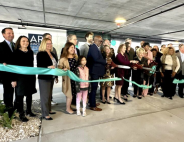
Pinellas County, Florida Celebrates Ribbon Cutting of the ARK Innovation Center Business Incubator
-

Time To “Pivot, Stretch, And Adapt”
-
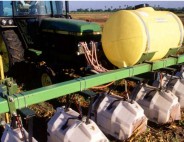
More Efficient Agriculture Techniques are Coming into the Focus
-

Logistics Getting on a Quicker, more Focused Track
-

Opportunity Zones and Post-COVID-19 Economic Recovery
-
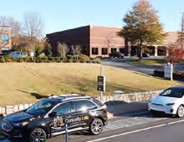
New Ideas Emerge for Both Sustainable and Fossil Fuel Technologies
-
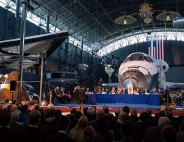
New Goals and New Internet Tech Help Build Base for Advanced Manufacturing
-

Business Services Today Focus on Human Resources, Data Analytics
-

Ready to Shift into High Gear
-

The New Forestry Momentum










